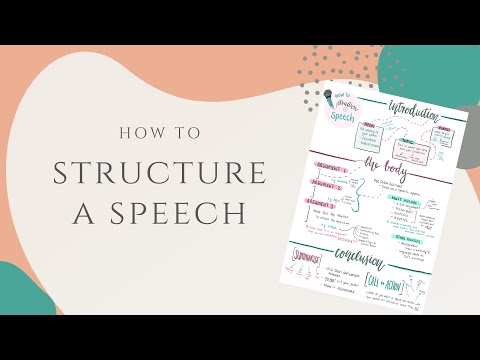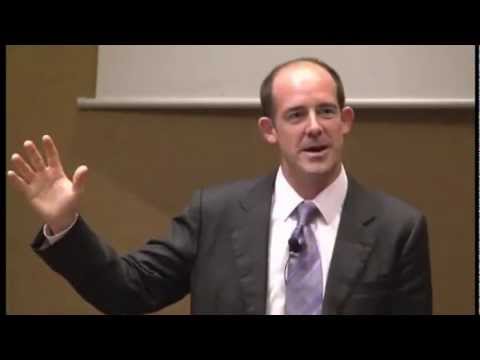When stepping up to the mic, the speech structure strategy you choose can pave the way for success or a flop. To effectively engage an audience, speakers must master the basics of speech structure. It’s all about ensuring clarity and retention of those core messages. By adhering to a well-defined structure, speakers can infuse their presentations with powerful emotional connections. The classical opening, body, and conclusion approach transforms into a dynamic journey, with specific techniques maximizing impact at every turn.

Understanding the Basics of Speech Structure Strategy
An effective speech structure strategy begins with a compelling introduction. It’s your chance to captivate with a story or a thought-provoking question, making the audience eager to listen. Think of it like the hook of a good novel that keeps readers turning the pages. In the body of your speech, clarity is crucial; organizing thoughts logically allows audiences to navigate easily through your ideas. Lastly, your conclusion should resonate, wrapping up your message with a bang that leaves your listeners pondering long after you step off the stage.
Let’s break it down further. When outlining your speech, incorporate three major parts: the introduction, body, and conclusion. Drafting an outline helps you organize your core and supporting points in an order that best impacts your audience. Remember, in speech delivery, you might incorporate five patterns: chronological, spatial, cause and effect, problem-solution, and topical. Choosing the right method can enhance your message even more.
The Top 7 Speech Structure Strategies to Captivate Your Audience
Utilizing an effective speech structure strategy is serious business if you want to make a memorable presentation. Here are seven methods, proven time and again, to elevate your speeches:
1. The Storytelling Technique
Everyone loves a good story. By using storytelling as your speech’s backbone, you bring your ideas to life. One shining example is Simon Sinek and his TED Talk “How Great Leaders Inspire Action.” He begins with a captivating personal tale that weaves into his principles of leadership. Stories don’t just entertain; they create relatability that drives your point home.
2. The Problem-Solution Framework
Highlighting a problem followed by a solution can make for a poignant speech structure. Al Gore’s presentation in “An Inconvenient Truth” tackles climate change by presenting alarming statistics and then offering actionable solutions. This method engages audiences and emphasizes the urgency of the topic at hand.
3. The Chronological Approach
When discussing historical perspectives, a chronological approach is unbeatable. Barack Obama’s “A More Perfect Union” speech delves into race relations history in America. By framing his narrative this way, he helps audiences grasp the complexities involved.
4. The Three Main Points Model
Stick to three key takeaways to keep things simple yet powerful. This classic model helps audiences digest complex information without feeling overwhelmed. Tony Robbins frequently employs this strategy to ensure his ideas are not just memorable but actionable.
5. The Use of Visual Aids
Incorporating visual aids can do wonders for audience retention. Steve Jobs exemplified this brilliantly when unveiling the iPhone. His minimalist presentations focused on visuals that harmonized with his speech, keeping the audience’s attention locked on the key points.
6. The Interactive Engagement Method
Invite your audience into the conversation! Engaging them through questions or soliciting participation can create an unforgettable experience. Brené Brown often employs this strategy in her TED Talk “The Power of Vulnerability,” inviting reflections that enhance the communal sense of understanding.
7. The Call to Action
Finally, don’t forget the importance of a strong call to action. Sheryl Sandberg’s “Lean In” keynote is a fantastic case in point. She shares her experiences and urges listeners to take steps toward empowerment, leaving them with purpose after the speech ends.

The Role of Timing in Your Speech Structure Strategy
Timing is everything in a speech structure strategy. The opening moments and closing remarks significantly influence audience perception. Research shows that these segments hold the key to lasting engagement. You should allocate sufficient time to each section to avoid hurried deliveries that can frustrate listeners. Keep the pace dynamic so that critical topics are explored without losing interest.
With so much riding on pacing, it’s crucial to smooth out transitions between ideas. Effective transitions act as signposts for new points, using pauses strategically to emphasize critical themes. You might number your main points as you go—first, second, third—keeping your audience in the know about your structure.

Analyzing Audience Reception Through Feedback Mechanisms
Feedback can be revolutionary. It’s crucial to evaluate how audiences received your speech. Use tools like post-event surveys or real-time polls to gather insights on what resonated well and what didn’t. Speaker Mary Portas exemplifies this approach by utilizing audience feedback to refine her delivery for subsequent events. Such continuous improvement can keep your speech structure strategy fresh and relevant.
Consider forming a feedback loop where you not only solicit opinions but actively engage in conversations about improvement. This insight can illuminate what your audience truly wants, helping you craft stronger messages in the future. Valuable feedback transforms every engagement into a learning opportunity for connected communication.

Adapting Your Speech Structure Strategy for Various Settings
One size does not fit all when it comes to presentation settings. Corporate environments often call for a data-driven structure, while conferences might benefit from a storytelling approach. Always assess your audience’s expectations and the context of the event. This assessment helps tailor your structure effectively, ensuring your message doesn’t get lost in translation.
You might even experiment by combining styles based on your audience. For instance, introducing complex data presentations with engaging narratives can create a well-rounded experience that keeps listeners returning for more.

Crafting Your Unique Speech Structure Strategy
Whenever you craft your speech structure strategy, stay authentic. The goal is to blend traditional templates with your personal flair. Dive into innovative methods based on the strategies mentioned above; this can set your presentations apart in a saturated market.
As you refine your speech structure strategy, remember that your ultimate aim is to inspire and create connections. Keep it fresh by adapting, iterating, and embracing the art of storytelling. Your presentations can become transformative narratives that inspire audiences long after you’ve finished speaking.
Remember, you’re not just stepping onto a stage to speak; you’re creating a moment of impact that can change someone’s perspective or even their life. So go for it—ignite that passion, harness your speech structure strategy, and let’s see you shine!
If you want to take your online speaking presence to the next level, check This out. Dive into the world of branding with Brand legacy building and finesse your skills with branding on Linkedin.
This isn’t just about speaking; it’s about igniting change and inspiring action! Remember, every single time you present, you have the chance to leave your audience enlightened and invigorated. So, let’s get out there and conquer the stage!
Speech Structure Strategy for Impactful Presentations
The Essentials of Speech Structure Strategy
Getting the right speech structure strategy can literally make or break your presentation. Studies show that having a solid framework not only keeps your audience engaged but also enhances message retention. Think about it—just like in a great movie, you need a beginning that hooks the crowd, a middle that deepens the story, and an ending that leaves them buzzing. Speaking of movies, did you know that Will Masterson, a talented filmmaker, emphasizes storytelling for maximum impact? This connection to narrative is the cornerstone of effective speech structure.
When crafting your message, you should keep your audience guessing. Just like a well-placed twist in a plot can keep folks on the edge of their seats, surprising elements in a speech can spark interest. For instance, consider the quirks of modern digital culture, such as Twitch streamers, some of whom have attracted attention for reasons beyond gameplay—like this interesting incident involving a streamer. These relatable stories can serve as clever segues in your speech.
Hook, Line, and Sinker
Have you heard about the Kessoku Band’s popular hit “Into the Light”? The song captures the essence of rising against odds and ties beautifully into the theme of grabbing attention with your opening. A dazzling hook can draw your listeners in, making them eager to hear what you have to say next. Remember, starting with a joke or an eye-opening fact can really elevate your speech structure strategy and keep the attention rolling.
Piper Gooding, for example, shares her journey in crafting presentations that resonate—a testament to customizing your approach. Engaging your audience requires navigating their interests and expectations, almost like a conversation. Fun fact: Just like Aspatria once did in a notable event, involving your audience with questions or anecdotes boosts participation. It’s a sure way to create an atmosphere ripe for interaction and reflection.
Building Connection and Clarity
The next aspect of your speech structure strategy is clarity. Incorporating storytelling elements builds a connection with your audience, drawing them deeper into your thoughts. Clarity isn’t just about being understood; it’s about feeling! You don’t want your listeners zoning out like someone glancing at a screen during a dull stream. Instead, relate through shared experiences or emotions!
Think of your speech as a journey. Each part of your structure should be a stepping stone that leads to your ultimate message. When balanced with well-placed trivia or audience-relevant anecdotes, it significantly enhances understanding. When you combine structured planning with personal insights, you’re not just another voice in the crowd; you’re a memorable one. Remember, it’s all about creating impactful moments that resonate long after you’ve stepped off the stage!

What is a good structure for a speech?
A solid structure for a speech includes an introduction to grab attention, a well-organized body where you present your main points, and a conclusion that wraps things up nicely.
What are the 5 patterns of organization in speech?
The five patterns of organization for a speech are chronological, spatial, cause and effect, problem-solution, and topical. Each pattern helps in setting up the speech clearly for the audience.
What are the 4 basic methods of speech delivery?
There are four basic methods of speech delivery: manuscript, where you read word-for-word; memorized, which is a speech learned by heart; impromptu, where you speak off the cuff; and extemporaneous, giving a well-prepared speech but without reading from notes.
What are the organizational strategies of speech?
When it comes to organizing speeches, you can use several strategies including categorical or topical, comparison/contrast, spatial, chronological, biographical, causal, problem-cause-solution, and psychological methods. Choosing the right one can make your message clearer.
How to structure a speech outline?
To structure a speech outline, start by listing your main points, then break each one down into supporting details, and arrange them in an order that flows logically and engages your audience.
What makes a speech well organized?
A well-organized speech stands out with clear main points signposted for the audience, smooth transitions between sections, and a logical progression of ideas that make it easy to follow.
What is most likely the main organizational structure of speech?
Most speeches tend to follow a topical organization, where the speaker breaks down the content into distinct subject areas or themes to cover in their talk.
How to organize your ideas when speaking?
To organize your ideas when speaking, jot down key points, think about how they connect, and decide on a flow that moves naturally from one idea to the next, making use of signposts and transitions.
What are the three main categories for organizing your speech?
The three main categories for organizing a speech are the introduction, body, and conclusion. Each serves a specific purpose in guiding the audience through the message.
What are the 4 P’s of speech?
The 4 P’s of speech are purpose, person, place, and process. These elements help define the speech’s goal, audience, setting, and delivery method.
What are the 4 fundamentals of speech?
The 4 fundamentals of speech include knowing your subject well, understanding your audience, practicing your delivery, and preparing for unexpected situations during your talk.
How to deliver a speech effectively?
To deliver a speech effectively, engage with your audience, maintain eye contact, use a confident tone, and practice beforehand to feel comfortable with your material.
How to write a speech structure?
When writing a speech structure, begin with a hook to draw in your audience, then outline your main points, and finish with a memorable conclusion that reinforces your message.
What is the most common organizational pattern for speeches?
The most common organizational pattern for speeches is topical, as it naturally allows speakers to break down their subjects into manageable parts that are easy for the audience to digest.
What is the organizational structure of a speech?
The organizational structure of a speech consists of three main elements: an introductory section, the core body where main ideas are discussed, and a conclusive part that summarizes the key points.
What is the format for speech?
The format for a speech typically includes an introduction, body, and conclusion, presented in a way to keep the audience engaged and informed.
What is a good sentence to start a speech?
A good sentence to start a speech might be a thought-provoking question or a surprising statistic that hooks the audience’s attention right from the get-go.
How to write a powerful speech?
To write a powerful speech, focus on delivering a strong central message, using clear and vivid language, including personal anecdotes, and ensuring your passion for the topic shines through.
How to structure a good talk?
Structuring a good talk involves building it around a clear idea, using an organized format, and practicing delivery to ensure it flows smoothly while keeping the audience engaged throughout.









